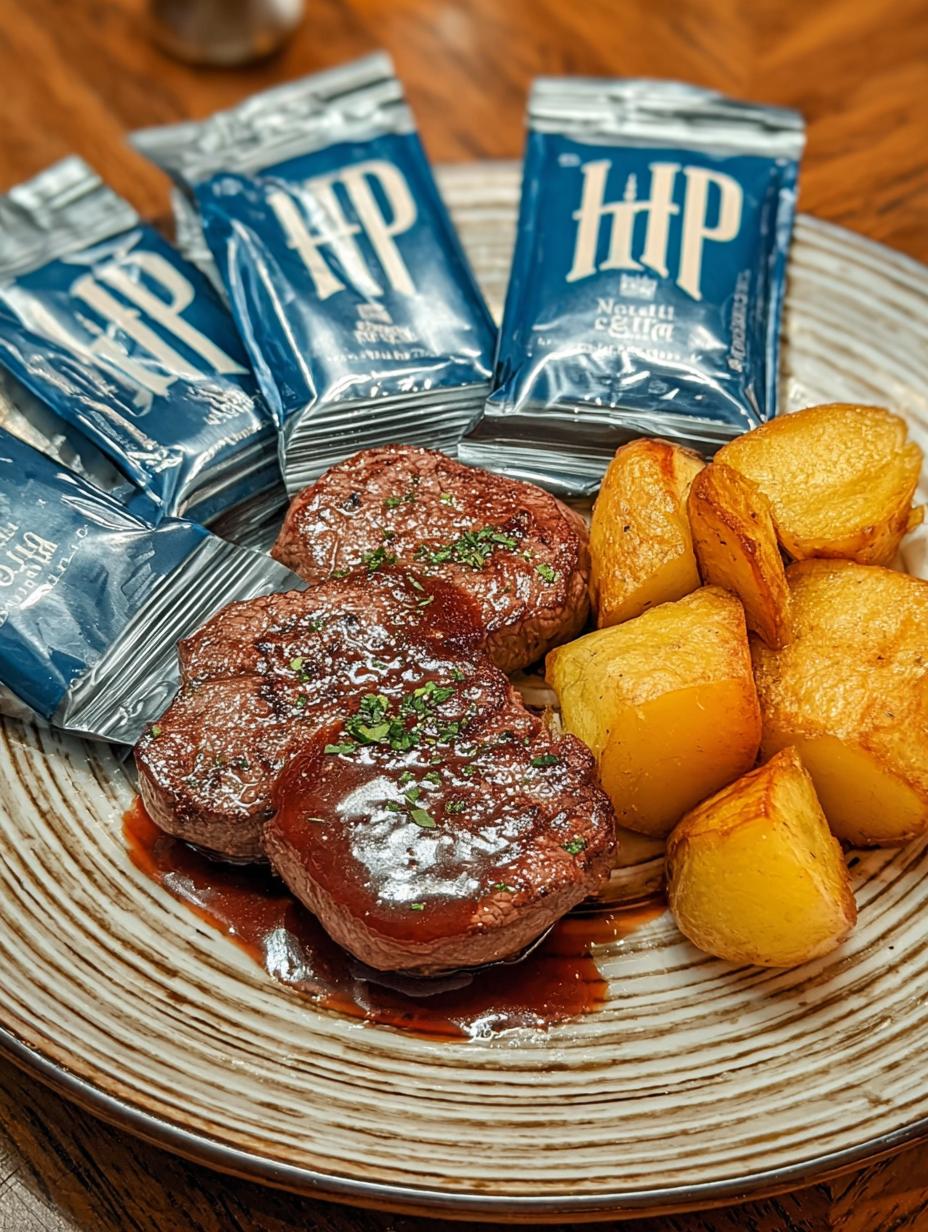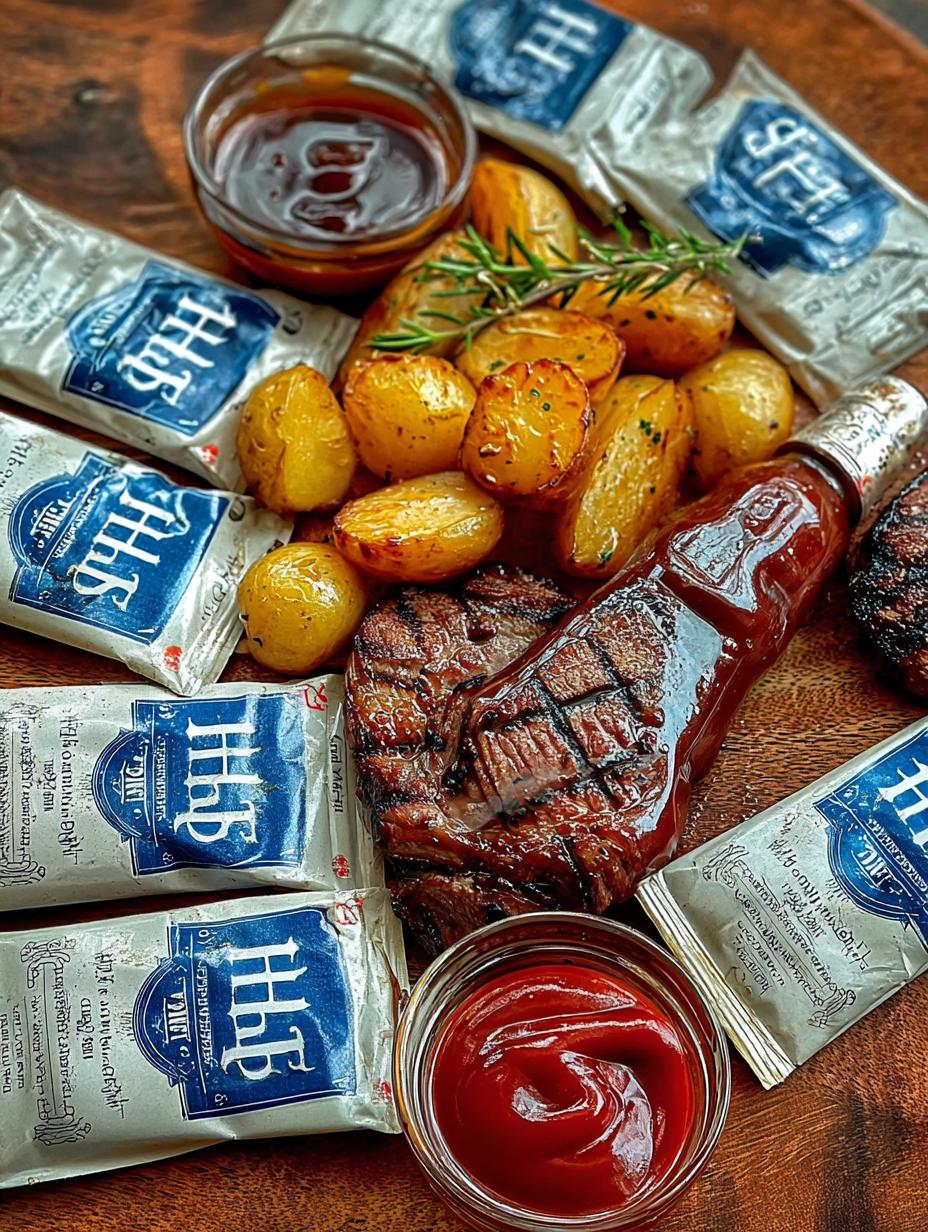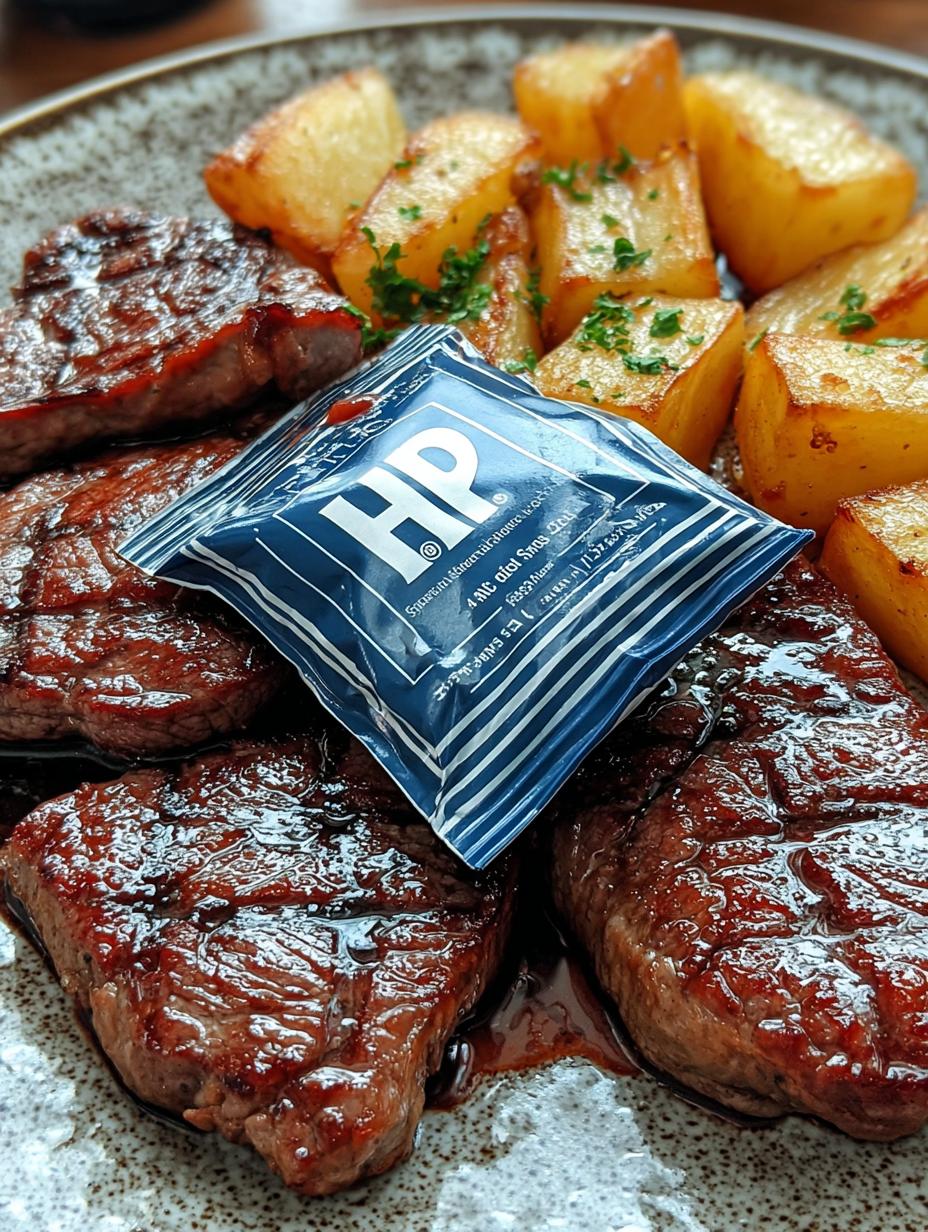Sauce has been a kitchen staple for me since I was a kid, transforming simple meals into something truly special. I remember my mom making a rich, bubbling tomato sauce from scratch, the aroma of garlic and herbs filling our small apartment. It wasn’t just a topping; it was an experience! Whether it’s a creamy dressing for a salad or a savory condiment slathered on roasted chicken, a good sauce adds that essential layer of flavor and moisture. It’s amazing how a few simple ingredients can create such depth. Let’s dive into the wonderful world of sauces and discover how they can elevate your cooking!
Why You’ll Love Exploring Different Sauces
Discovering new sauces is like unlocking a secret weapon for your kitchen. They’re the unsung heroes that can completely transform ordinary meals into gourmet experiences. Here’s why you’ll adore exploring the vast world of sauces:
- Elevate any dish from bland to brilliant.
- It’s the perfect condiment for meat, adding moisture and flavor.
- A great condiment for potatoes, turning fries or roasted potatoes into a treat.
- Add vibrant color and texture to your plates.
- Impress guests with restaurant-quality meals at home.
- Create simple yet satisfying vegetarian or vegan options.
- Experiment with global flavors and cuisines.
- Enhance the overall dining experience with rich, complex tastes.
Key Ingredients in Classic Sauces
Building a fantastic sauce starts with understanding the building blocks. These core ingredients provide the foundation for countless flavor profiles, from tangy to sweet to savory. I love how a few simple items can create such complex depth!
- Tomatoes – The base for many marinara or classic Italian sauces, providing a sweet and acidic foundation. I often use canned San Marzano for consistent flavor.
- Vinegar (like Malt or Red Wine) – Adds essential acidity to cut through richness and brighten flavors. It’s crucial for balancing a savory sauce.
- Molasses – This dark, sweet syrup adds depth and a hint of bitterness, perfect for rich brown sauces or barbecue blends.
- Tamarind – Offers a unique sweet-sour punch, commonly found in many Asian and some British brown sauces, lending a distinct tang.
- Spices – The soul of any sauce! Think garlic powder, onion powder, paprika, mustard, and cloves. They add warmth, heat, and complexity.

How to Make and Use a Basic Sauce
Creating a foundational sauce from scratch is incredibly rewarding, and it’s much simpler than you might think! This basic recipe forms the heart of many delicious dishes. I love starting with this process because it fills my kitchen with incredible aromas.
- Step 1: Preheat your oven to 350°F (175°C). While it heats, gather your ingredients.
- Step 2: In a large, heavy-bottomed pot or Dutch oven, warm 2 tablespoons of olive oil over medium heat. Add 1 finely diced medium onion and sauté until softened and translucent, about 5-7 minutes. You’ll smell its sweetness as it cooks.
- Step 3: Stir in 2 minced garlic cloves and cook for another minute until fragrant. Be careful not to burn the garlic.
- Step 4: Pour in 1 (28-ounce) can of crushed tomatoes. This is the beginning of your delicious homemade marinara sauce recipe. Stir well to combine with the onions and garlic.
- Step 5: Add 1 teaspoon of dried oregano, 1/2 teaspoon of dried basil, and a pinch of red pepper flakes for a little warmth. Season with salt and freshly ground black pepper to taste.
- Step 6: Bring the mixture to a gentle simmer, then reduce the heat to low, cover, and let it cook for at least 30 minutes, stirring occasionally. The longer it simmers, the deeper the flavors will become. This slow cooking helps meld all the ingredients into a perfect basic tomato sauce.
- Step 7: For a smoother consistency, you can carefully use an immersion blender to puree the sauce. If you don’t have one, let it cool slightly and transfer to a regular blender.
- Step 8: Taste and adjust seasonings as needed. This versatile sauce is now ready to be used as a base for pasta dishes, pizzas, or as a dipping sauce. Enjoy the rich, homemade flavor!
Pro Tips for the Best Sauce Creations
I’ve learned a few tricks over the years that make a huge difference in sauce making. These tips will help you achieve that perfect restaurant-quality flavor and texture at home.
- Always taste and adjust seasonings throughout the cooking process. Don’t be afraid to add a little more salt, pepper, or acid (like vinegar or lemon juice) to brighten the flavors.
- For richer, deeper flavors, consider adding a splash of wine (red or white, depending on the sauce) or a bit of umami-rich ingredient like soy sauce or Worcestershire sauce.
- Don’t overcook delicate herbs; stir them in during the last few minutes of simmering to preserve their fresh aroma and flavor.

What’s the secret to perfect sauce consistency?
Achieving the ideal consistency often involves a reduction or a slurry. To thicken a thin sauce, simmer it uncovered to let excess liquid evaporate, or whisk in a slurry of cornstarch or flour with water until it reaches your desired thickness. For more information on thickening agents, you can check out Food Network’s guide.
Can I make sauce ahead of time?
Absolutely! Most sauces can be made a day or two in advance. This allows the flavors to meld beautifully. Simply cool completely, store in an airtight container in the refrigerator, and gently reheat when ready to serve. You can find more tips on food storage at FoodSafety.gov.
How do I avoid common mistakes when making sauce?
A common pitfall is burning garlic or onions; cook them over medium-low heat until softened, not browned. Another mistake is over-salting too early – season gradually and taste as you go. Rushing the simmer also prevents flavors from developing fully. Learn more about common cooking mistakes and how to avoid them on Simply Recipes.
Best Ways to Serve Your Sauce Creations
Once you’ve mastered making your own delicious sauces, the fun really begins with serving them! A great sauce can truly make a meal. I love pairing a rich, savory sauce with grilled steak – it adds so much depth and juiciness. For chicken, figuring out what is a good sauce for chicken is key; a creamy mushroom sauce or a bright lemon-herb drizzle works wonders.
Don’t forget about pasta! A simple marinara or a robust bolognese is always a crowd-pleaser. For a more adventurous palate, explore types of savory sauces for steak, like a classic peppercorn or a red wine reduction. Even simple roasted vegetables or mashed potatoes get an instant upgrade with a dollop of your favorite homemade creation.
Understanding Sauce Nutrition
While sauces add amazing flavor, it’s good to be aware of their nutritional profile. Understanding these details helps in making informed choices, especially when incorporating them regularly into your meals. Here’s a general breakdown of what you might find in a typical serving.
- Calories: Approx. 15-20
- Fat: Approx. 0g
- Saturated Fat: Approx. 0g
- Protein: Approx. 0g
- Carbohydrates: Approx. 4-6g
- Fiber: Approx. 0g
- Sugar: Approx. 3-5g
- Sodium: Approx. 150-200mg
Nutritional values are estimates and may vary based on specific ingredients and serving sizes used in your homemade sauce. For detailed nutritional information on specific ingredients, you can consult the USDA FoodData Central database.
How to Store and Reheat Homemade Sauce
Properly storing and reheating your homemade sauce ensures it stays fresh and delicious for your next meal. I always make sure to let my sauces cool down completely before packaging them up. This prevents condensation, which can lead to spoilage. For short-term use, airtight containers are perfect for refrigeration, keeping your sauce good for about 3 to 4 days.
If you’ve made a larger batch, freezing is an excellent option. Transfer the cooled sauce into freezer-safe containers or heavy-duty freezer bags, leaving a little headspace for expansion. Most homemade sauces can be safely stored in the freezer for up to 3 months. When you’re ready to use your stored sauce, the best way to reheat it is gently on the stovetop over low heat, stirring occasionally until fully warmed through. You can also reheat individual portions in the microwave. This storage-related secondary keyword ensures you can enjoy your delicious creations anytime!
Frequently Asked Questions About Sauce
What is the difference between sauce and gravy?
While often used interchangeably, there’s a key distinction. A sauce is typically made by thickening a liquid like stock, milk, or fruit puree with a roux, cornstarch, or reduction. Gravy, on the other hand, is specifically a sauce made from the juices of meats cooked in the same pan, often thickened with flour or cornstarch. Think of gravy as a specialized type of sauce.
What is a classic French sauce?
French cuisine is renowned for its foundational “mother sauces.” These include Béchamel (milk-based), Velouté (white stock-based), Espagnole (brown stock-based), Hollandaise (egg yolk emulsion), and Tomate (tomato-based). Many other French sauces are derived from these five, making them essential knowledge for any aspiring chef looking to understand complex flavor profiles. You can learn more about these mother sauces on Bon Appétit.
Can I use different liquids in my sauce base?
Absolutely! While water is the simplest base, experimenting with different liquids can drastically change the flavor. Broth (chicken, beef, vegetable), milk, cream, wine, fruit juices, or even pureed vegetables can form the foundation of your sauce. Each choice brings its own unique character and complements different ingredients.
How do I store homemade sauce for longer periods?
For extended storage, freezing is your best bet. Ensure the sauce is completely cooled before transferring it into airtight, freezer-safe containers or heavy-duty freezer bags. Most sauces will keep well for up to 3 months. When ready to use, thaw overnight in the refrigerator and gently reheat on the stovetop or in the microwave. For more information on food preservation, visit the about Niki Air Fryer page.
Variations of Sauce You Can Try
Once you’ve got the basics down, the world of sauce variations is truly exciting! You can tailor them to fit any dietary need or flavor preference. For a quick party starter, an easy dipping sauce for appetizers can be whipped up in minutes. Think a creamy ranch or a spicy sriracha mayo!
If you’re looking for something richer, a simple béchamel sauce recipe is a fantastic starting point for creamy pasta dishes, gratins, or as a base for cheese sauces. It’s a versatile white sauce that’s fundamental in many cuisines. For those seeking vegan options, a cashew-based cream sauce or a flavorful tahini dressing can be just as satisfying. Don’t shy away from experimenting with different herbs, spices, and even fruits to create your own signature sauce. You can find more recipe ideas on our last recipes page.
Print
Sauce Secrets: 1 Amazing Recipe Anyone Can Make
- Total Time: 0 minutes
- Yield: Varies
- Diet: Vegetarian
Description
HP Sauce is a popular British brown sauce known for its unique tangy and slightly spicy flavor. It’s a versatile condiment often paired with savory meat and potato dishes, offering a distinct taste that enhances everyday meals.
Ingredients
- Tomatoes
- Malt vinegar
- Molasses
- Tamarind
- Spices
Instructions
- Open the bottle of HP Sauce.
- Apply the brown sauce to your desired dish.
- Enjoy the unique flavor with meat and potato dishes.
Notes
- HP Sauce is a type of brown sauce originating from the United Kingdom.
- It is distinct from A1 Steak Sauce, offering a richer and thicker consistency.
- Variations include HP Fruity Sauce and HP Barbecue Sauce.
- The name ‘HP’ stands for Houses of Parliament.
- The sauce is now owned by Kraft/Heinz and produced in the Netherlands.
- Look for the ‘original’ sauce made in the Netherlands; versions made in North America are not recommended.
- The Royal Warrant of Appointment signifies approval by the British Royals.
- Prep Time: 0 minutes
- Cook Time: 0 minutes
- Category: Condiment
- Method: N/A
- Cuisine: Scottish (British)
Nutrition
- Serving Size: 1 tablespoon (approx. 15ml)
- Calories: Approx. 15-20
- Sugar: Approx. 3-5g
- Sodium: Approx. 150-200mg
- Fat: Approx. 0g
- Saturated Fat: Approx. 0g
- Unsaturated Fat: Approx. 0g
- Trans Fat: Approx. 0g
- Carbohydrates: Approx. 4-6g
- Fiber: Approx. 0g
- Protein: Approx. 0g
- Cholesterol: Approx. 0mg
Keywords: HP Sauce, brown sauce, British condiment, savory sauce, tangy sauce, spicy sauce, best brown sauce, UK sauce, condiment for meat, condiment for potatoes
